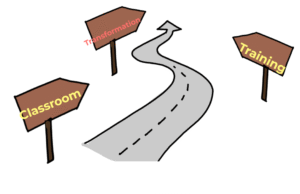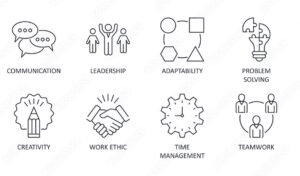Teachers are multi-skilled, multi-talented, and natural multi-taskers. For us, transformation is never a challenge—it’s a cakewalk. A teacher who can transport classrooms to historical ages, bring Shakespeare’s novels to life, play with numbers, and step into the shoes of Einstein, Newton, and Aristotle can surely guide the corporate world with the same passion and ease. Teaching has always been about adapting, and that’s why for me stepping from the classroom to the boardroom is simply a continuation of our journey.
Lifelong Learners at Heart
One of the greatest qualities of a teacher is the mindset of continuous learning. We are constantly upskilling, reskilling, unlearning, and relearning. Every new batch of students brings new perspectives, new challenges, and new ways to adapt. This lifelong learner mindset seamlessly translates into corporate training, where businesses are evolving faster than ever. Trainers too must remain curious, adaptable, and willing to upgrade themselves.

Skills that Shape Communication
As teachers, we practice skills every day that professionals in other fields spend years developing. We learn how to engage audiences by presenting concepts in new, creative ways. We simplify complex extracts into relatable, easy-to-grasp language. We grab attention when it drifts, using voice modulation, eye contact, or even a well-timed story. This daily practice has shaped me into a confident speaker—one who can stand in front of diverse audiences and make ideas clear and engaging.
We are adaptable surfers—riding the waves of change with balance and confidence. We are storytellers—transporting audiences into worlds of imagination, allowing them to visualize, connect, and transform. These strengths are not just useful in classrooms; they are vital in corporate learning environments, where engagement and clarity are key to success.

Parallels Between Classrooms and Boardrooms
When I look at the shift from teaching to training, the similarities are striking. Both spaces demand the ability to read the room, adapt to the audience’s tone, and switch strategies mid-session. In corporate training, just as in teaching, no two groups are the same. Each session requires flexibility, patience, and the ability to meet people where they are.
Simplifying complex ideas is another skill teachers bring naturally. Whether it’s a scientific principle, a historical event, or a mathematical formula, we know how to break things down into digestible, relatable chunks. In business, this translates to explaining strategies, processes, and change initiatives without overwhelming teams. Clarity is key—whether in education or in corporate life.
Handling the Unexpected
Classrooms are unpredictable places. From tough questions to disengaged learners, from technology glitches to sudden distractions, teachers are trained to stay calm under pressure. This experience prepares us to handle similar challenges in the corporate world—whether it’s a skeptical audience, difficult Q&A sessions, or high-stakes presentations. The ability to respond with calm authority builds trust and credibility, qualities that are invaluable in leadership and training roles.

Storytelling as a Bridge
If there is one universal tool teachers excel at, it is storytelling. A story has the power to capture attention, make content relatable, and create lasting impact. In the corporate world, storytelling is equally powerful. It can inspire teams, motivate employees, and turn abstract business ideas into messages people remember and act upon. The teacher’s gift of storytelling becomes the trainer’s secret weapon.
The Power of Empathy
Perhaps the most important quality teachers carry into the corporate world is empathy. In classrooms, empathy helps us connect with learners, encourage participation, and build trust. In training rooms, the same empathy creates an environment where participants feel safe to share, ask questions, and grow. Corporate learning is not just about transferring knowledge—it is about inspiring transformation. And transformation only happens when people feel understood and supported.
Conclusion
From classrooms to boardrooms, the essence of the role remains the same: guiding learning, fostering growth, and enabling transformation. Teachers are natural communicators, leaders, and motivators. The skills we sharpen in classrooms—adaptability, clarity, confidence, storytelling, and empathy—are the very skills businesses value most today.
For me, the journey from teaching to corporate training is not a leap into the unknown, but a natural extension of what I have always done. The stage may have changed, but the mission remains: to engage, to inspire, and to empower.




